
Space Shuttle Atlantis is a Space Shuttle orbiter vehicle which belongs to the National Aeronautics and Space Administration (NASA), the spaceflight and space exploration agency of the United States. Manufactured by the Rockwell International company in Southern California and delivered to the Kennedy Space Center in Eastern Florida in April 1985, Atlantis is the fourth operational and the second-to-last Space Shuttle built. Its maiden flight was STS-51-J from 3 to 7 October 1985.

Jerome "Jay" Apt III, Ph.D. is an American astronaut and professor at Carnegie Mellon University. Before he became an astronaut, Apt was a physicist who worked on the Pioneer Venus 1978 space probe project, and used visible light and infrared techniques to study the planets and moons of the solar system from ground-based observatories.
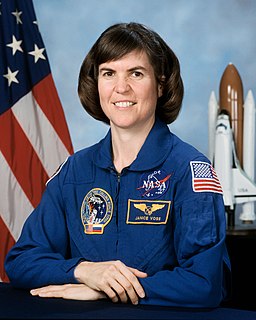
Janice Elaine Voss was an American engineer and a NASA astronaut. Voss received her B.S. in engineering science from Purdue University, her M.S. in electrical engineering from MIT, and her PhD in aeronautics and astronautics from MIT. She flew in space five times, jointly holding the record for American women. Voss died in Arizona on February 6, 2012 from breast cancer.

Terrence Wade Wilcutt is a United States Marine Corps officer and a former NASA astronaut. He is a veteran of four Space Shuttle missions. Wilcutt was tNASA's Chief of Safety and Mission Assurance, until his retirement from NASA on December 2020.

Kathryn Dwyer Sullivan is an American geologist and a former NASA astronaut. A crew member on three Space Shuttle missions, she was the first American woman to walk in space on October 11, 1984. On June 7, 2020, she became the first woman to dive to the Challenger Deep in the Mariana Trench, the deepest part of the Earth's oceans. She was Under Secretary of Commerce for Oceans and Atmosphere and Administrator of the National Oceanic and Atmospheric Administration after being confirmed by the U.S. Senate on March 6, 2014. Sullivan's tenure ended on January 20, 2017, with the swearing in of President Donald Trump. Following completion of her service at NOAA, she was designated as the 2017 Charles A. Lindbergh Chair of Aerospace History at the Smithsonian Institution’s National Air and Space Museum, and has also served as a Senior Fellow at the Potomac Institute for Policy Studies.

Charles Frank Bolden Jr. is a former NASA administrator, a retired United States Marine Corps Major General, and a former astronaut who flew on four Space Shuttle missions.

STS-59 was a Space Shuttle program mission that took place in 1994. The launch was chronicled by the 1994 Discovery Channel special about the Space Shuttle program.
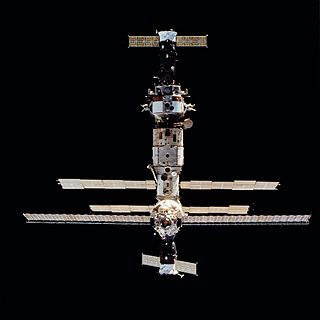
STS-63 was the second mission of the US/Russian Shuttle-Mir Program, which carried out the first rendezvous of the American Space Shuttle with Russia's space station Mir. Known as the 'Near-Mir' mission, the flight used Space Shuttle Discovery, which lifted off from launch pad 39B on 3 February 1995 from Kennedy Space Center, Florida. A night launch and the 20th mission for Discovery, it marked the first time a Space Shuttle mission had a female pilot, Eileen Collins, and the first EVAs for both a UK born astronaut, Michael Foale, and a US astronaut of African heritage, Bernard A. Harris, Jr.. It also carried out the successful deployment and retrieval of the Spartan-204 platform, along with the scheduled rendezvous and flyaround of Mir, in preparation for STS-71, the first mission to dock with Mir.

STS-89 was a Space Shuttle mission to the Mir space station flown by Space Shuttle Endeavour, and launched from Kennedy Space Center, Florida on 22 January 1998.

Michael Allen Baker is a retired captain in the United States Navy, former NASA astronaut, and the International Space Station Program Manager for International and Crew Operations, at NASA's Johnson Space Center. He is responsible for the coordination of program operations, integration and flight crew training and support activities with the International Partners.
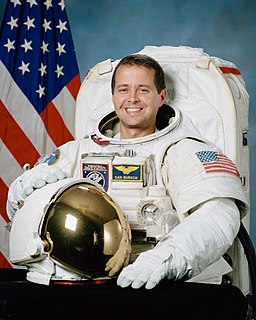
Daniel Wheeler Bursch is a former NASA astronaut, and Captain of the United States Navy. He had four spaceflights, the first three of which were Space Shuttle missions lasting 10 to 11 days each. His fourth and final spaceflight was a long-duration stay aboard the International Space Station as a crew member of Expedition 4, which lasted from December 2001 to June 2002. This 196-day mission set a new record for the longest duration spaceflight for an American astronaut, a record simultaneously set with his crew mate Carl Walz. Their record has since been broken, and as of 2016 it is held by Scott Kelly, who flew a 340-day mission during Expeditions 43, 44 and 45.

Kevin Patrick "Chilli" Chilton is an American mechanical engineer and retired United States Air Force four-star general, test pilot, and NASA astronaut. His last assignment was as commander, U.S. Strategic Command from October 3, 2007 to January 28, 2011. Prior to his appointment to general officer ranks, Chilton spent 11 years of his military career as a NASA astronaut. He retired from the Air Force on February 1, 2011, after having achieved the highest rank of any military astronaut. On January 30, 2012, General Chilton was named to the board of directors of Orbital Sciences Corporation.

Michael Richard Uram "Rich" Clifford, is a former United States Army officer and NASA astronaut. Clifford is considered a Master Army Aviator and has logged over 3,400 hours flying in a wide variety of fixed and rotary winged aircraft. Clifford retired from the U.S. Army at the rank of lieutenant colonel. He has logged over 12 hours of spacewalk time over three Space Shuttle missions. He is also one of the first people to conduct a spacewalk while docked to an orbiting space station. The spacewalk was conducted during STS-76, while docked at the Russian space station Mir.
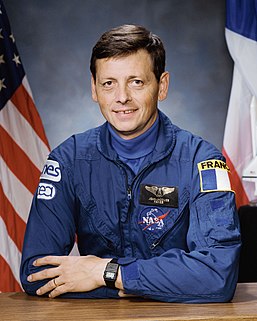
Jean-Jacques Favier is a French engineer and a former CNES astronaut who flew aboard the STS-78 NASA Space Shuttle mission. Favier was due to fly aboard the destroyed Columbia mission in 2003, but later signed out of the mission. Jean-Jacques Favier has been Deputy Director for Space Technology and Deputy Director for Advanced Concepts and Strategy at CNES, Director of the Solidification Laboratory at the French Atomic Energy Commission and Research Program Director at the International Space University.

Sidney McNeill Gutierrez, is an American pilot and former NASA astronaut. Since retiring from NASA, Gutierrez has worked in several leadership positions at Sandia National Laboratories and Rocket Crafters Inc.

Linda Maxine Godwin Ph.D. is an American scientist and retired NASA astronaut. Godwin joined NASA in 1980 and became an astronaut in July 1986. She retired in 2010. During her career, Godwin completed four space flights and logged over 38 days in space. Godwin also served as the Assistant to the Director for Exploration, Flight Crew Operations Directorate at the Johnson Space Center. Since retiring from NASA, she accepted the position of Professor in the Department of Physics and Astronomy at the University of Missouri.
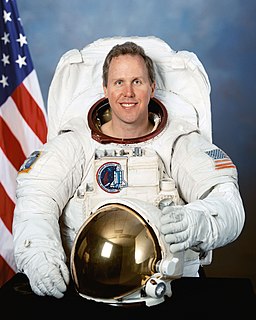
Thomas David Jones is a former United States astronaut. He was selected to the astronaut corps in 1990 and completed four Space Shuttle flights before retiring in 2001. He flew on STS-59 and STS-68 in 1994, STS-80 in 1996, and STS-98 in 2001. His total mission time was 53 days 48 minutes. He works as a planetary scientist, space operations consultant, astronaut speaker, and author.

Pierre Joseph Thuot is a retired United States Navy captain and NASA astronaut. He went into space three times, spending over 650 hours in space, including over 15 hours in three space walks. He is a former U.S. record holder for time spent on one spacewalk, and participated in the first three-person spacewalk.

Peter Jeffrey Kelsay Wisoff is an American physicist and former NASA astronaut. Wisoff qualified as mission specialist and flew in four manned Space Shuttle missions, with his first launch in 1993 and his last in 2000.
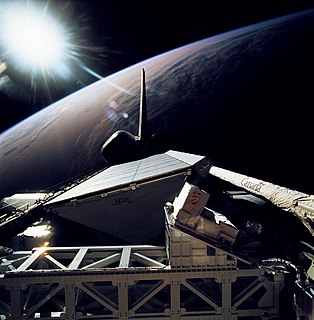
STS-68 was a human spaceflight mission using Space ShuttleEndeavour that launched from Kennedy Space Center, Florida on 30 September 1994.





















